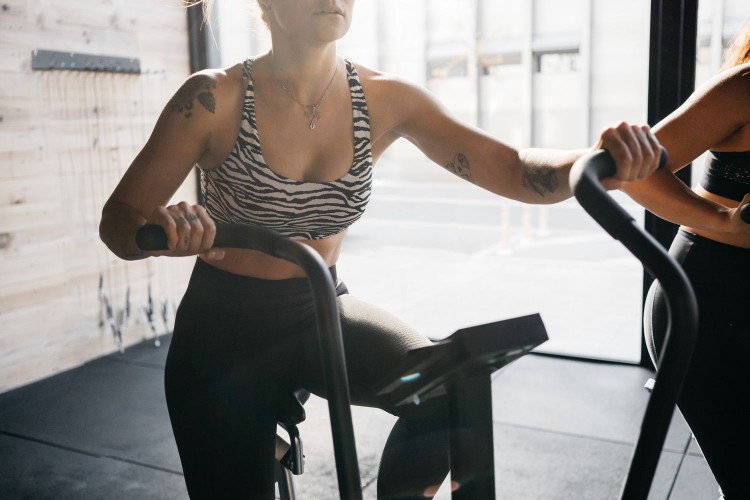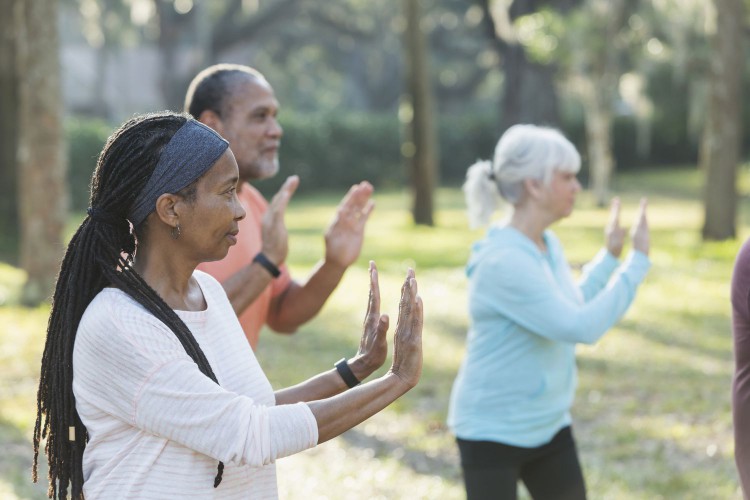Heart disease: Adding strength training to cardio may lower risk

New research suggests that a combination of aerobic exercise and strength training lowers heart disease risk as effectively as aerobic-only routines.
Incorporating strength training into regular exercise routines benefits people with certain health conditions, such as obesity.
However, more studies are needed to establish the heart health benefits of different intensity levels of exercise.
Approximately one in three deaths in the United States is caused by cardiovascular disease (CVD), according to the Centers for Disease Control and Prevention (CDC). A new study indicates that splitting the recommended amount of physical activity between aerobic and resistance exercise reduces cardiovascular disease risks as much as aerobic-only regimens.
The results were recently published in theEuropean Heart Journal.
The study, led by Iowa State University, followed 406 participants between 35 and 70 years of age over one year of randomized, controlled exercise. All participants had elevated blood pressure and met the threshold for having overweight or obesity with body mass indexes between 25-40 kg/m2.
They were divided into four groups: no exercise, aerobic only, resistance only, or aerobic plus resistance, and those placed in a group with activity had hourlong, supervised workouts three times a week for a year.
Resistance training could boost heart health
The researchers tailored these workouts to the participants based on their health conditions, with specific weight-training regimens and heart-rate monitoring protocols in place to create the ideal level of intensity. They then measured their CVD risk factors — systolic blood pressure, low-density lipoprotein cholesterol, fasting glucose, and body fat percentage — at three points throughout the study: the start, six months in, and after a year.
The participants in the aerobic and aerobic plus resistance groups had the lowest level of composite scores for the risk factors. However, the combined exercise groups had more improved aerobic fitness and strength.
“If you’re bored with aerobic exercise and want variety or you have joint pain that makes running long distances difficult, our study shows you can replace half of your aerobic workout with strength training to get the same cardiovascular benefits,” said lead study author Prof.Duck-chul Lee, Ph.D., a professor of kinesiology at Iowa State, in a news release.
“The combined workout also offers some other unique health benefits, like improving your muscles,” Prof. Lee said.
How much resistance training should you do?
Thecurrently recommends 150 minutes of moderate-intensity or 75 minutes of vigorous-intensity aerobic exercise per week. But additional sessions of muscle-strengthening activities that work all major muscle groups (legs, hips, back, abdomen, chest, shoulders, and arms) are encouraged each week, Dr. Rigved Tadwalkar, board certified cardiologist at Providence Saint John’s Health Center in Santa Monica, CA, told Medical News Today.
“The study suggests that splitting the recommended amount of activity between aerobic and resistance exercise can be as effective as aerobic-only regimens, so one would aim for about 75 minutes of each per week,” Dr. Tadwalkar said.
Stereotypical attitudes around exercise practices can be an obstacle to establishing a regular practice, so easing into these types of activities can be an effective way to get started, Dr. Cheng-Han Chen, board certified interventional cardiologist and medical director of the Structural Heart Program at MemorialCare Saddleback Medical Center in Laguna Hills, CA, told MNT.
“I typically recommend starting a new exercise regimen by simply walking. No special equipment is needed, you can go at a pace that is comfortable for you, and it can be done almost anywhere. For a harder workout, one can incorporate stairs into the exercise. For those with musculoskeletal issues, I recommend lower impact exercise such as stationary bicycle or water aerobics.”
– Dr. Chen
“Exercise often comes with its share of stigmas, from the fear of judgment, to feeling intimidated at the gym. These concerns can act as big barriers, deterring many from initiating or maintaining an exercise program,” Dr. Tadwalkar said.
“It’s important to recognize that everyone begins their fitness journey from a unique starting point, and there is no universal approach to exercise. A personalized approach involves discovering activities that align with personal preferences and lifestyle, while understanding that starting small and gradually increasing activity levels is perfectly acceptable (and effective),” he added.
How does exercise intensity affect the benefits of workouts?
Dr. Chen observed that the study’s relatively homogeneous population (primarily well-educated and white) makes it difficult to assess whether the conclusions would apply to the broader population. The study authors acknowledged that the level of rigor and “energy expenditure” in different exercise practices would have significantly different effects on different people.
“Another limitation was that it studied time of exercise rather than intensity,” Dr. Chen said. “As there is likely a wide variability in the intensity someone’s exercise regimen, the effects of actual energy expenditure were not captured. In addition, it is unknown whether their ‘cardiovascular disease risk profile’ endpoints will directly translate into a significantly decreased risk of developing cardiovascular disease with these study conditions.”
Dr. Tadwalkar pointed out that the study was conducted in a controlled environment (with supervised workouts), which may not accurately represent how most people can engage with exercise. Not everyone has the same routine, the same resources available to them, or the same schedules.
“A shift towards real-world settings, coupled with the integration of wearable technology to monitor participants activities beyond the lab, could offer a more realistic representation,” Dr. Tadwalkar said.
“The focus on adults who are overweight or [have obesity], and with elevated blood pressure poses a challenge to the generalizability of the findings. To enhance the applicability of the results, future studies should strive to include a broader spectrum of participants, encompassing variations in age, weight, and health status.”
– Dr. Tadwalkar











